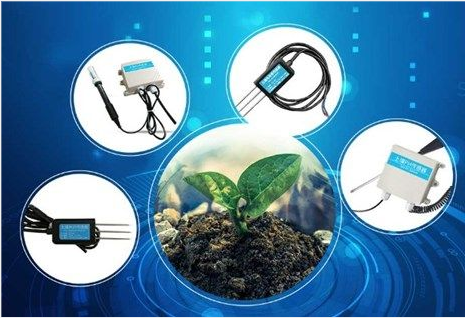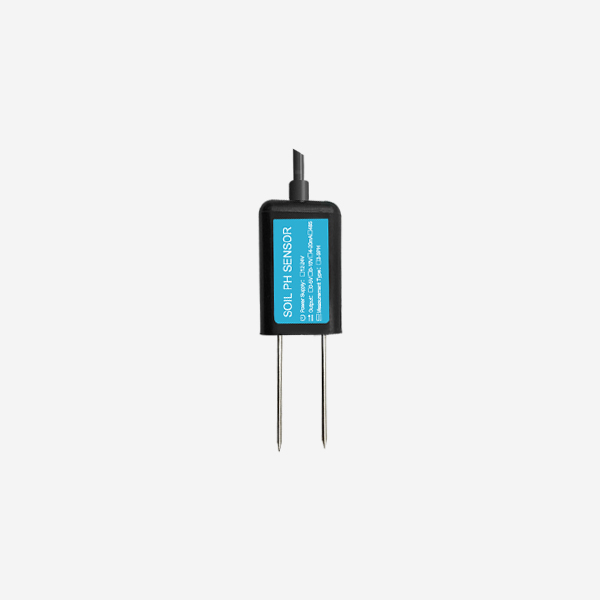For soil detection in agricultural production, people generally use soil sensors to detect according to their needs.

What types of soil sensors are there?
1, soil ph meter

Soil pH represents soil pH. Its level not only affects the ionic form and availability of large and trace elements in the soil but also has a significant impact on the life activities of microorganisms in the soil. Too low or too high pH will affect nutrient absorption.
The soil pH sensor is composed of a metal sensor and a functional value switching device. As the core hardware system, the metal sensor is in direct contact with the soil during detection and uses the oxidation reaction in the chemical reaction to generate current. The magnitude of the current value will drive the different ph value unit data corresponding to the ammeter, and the value can be directly displayed to people through the host conversion.
2, soil moisture sensor
Soil moisture refers to the water content of the soil and is the most important and commonly used soil information. It is the basis for scientifically controlling and adjusting the soil condition, carrying out water-saving irrigation, and realizing scientific water use and irrigation automation. Due to the spatial variability of soil structure and soil moisture, the soil moisture content in the same plot is different, which requires the determination of soil moisture content.
The soil moisture sensor is also called a soil humidity sensor. It cooperates with temperature, light, acid, salt, and other sensors, and then connects with a computer to analyze and research crop growth, thereby controlling crops to always grow under suitable environmental conditions.
The soil moisture sensor can also measure temperature, humidity, and conductivity.
3, soil temperature sensor
Soil temperature is an important environmental factor for plant growth and development directly or indirectly, and one of the important parameters for soil monitoring. It affects a series of physical, chemical, and biochemical processes in the soil, and is related to crop growth, development and physiological processes close. According to research, soil temperature affects the physiological process, external shape, and internal structure of crops, and has direct guiding significance for the planting of crops. At the same time, the soil temperature is also an important parameter and basis in the establishment of the ecological model and soil classification. At present, soil temperature measurement and forecast mainly adopt contact, non-contact and simulation methods.
4, soil moisture and temperature sensor

The soil temperature and humidity sensor are equal to the combination of the soil temperature sensor and the soil moisture sensor. The monitoring of soil temperature and humidity can allow us to understand the soil conditions in real-time, analyze the soil drought and flood conditions and the impact on the growth and development of crops on time, which will help transform traditional agriculture to modern agriculture and promote the development of “smart agriculture”. Besides, based on the measured soil temperature and humidity data, natural disasters such as floods and droughts can be predicted in time to assist in the protection and construction of the ecological environment.
In addition to the soil temperature and humidity sensor, there is also a tube-type soil moisture monitor that uses TDR measurement. Based on the principle of dielectric constant, these soil sensors can monitor soil temperature and humidity in different layers in real time, realize dynamic observation of soil moisture content in each soil layer and visualize soil salt accumulation. It can quickly monitor the soil temperature and humidity of different soil layers. , Accurately monitor. Soil parameter rapid tester is widely used in soil testing in fields such as smart agriculture, orchard nursery, demonstration park, smart city, etc.
5, soil npk meter

Nitrogen, phosphorus, and potassium are essential elements for plant growth and development, as well as the three elements that are most consumed. In the soil, nitrogen, phosphorus, and potassium basically exist in the form of organic compounds, but they are returned to the soil in the form of remnants and roots, but not many, and cannot be used directly by plants. In agricultural production, the content of available nitrogen, phosphorus, and potassium is an important indicator to measure soil fertility and guide production.